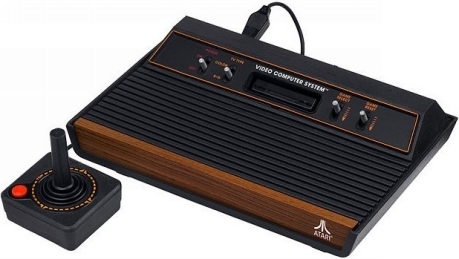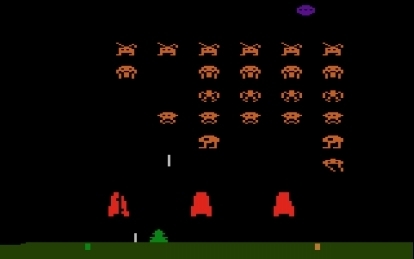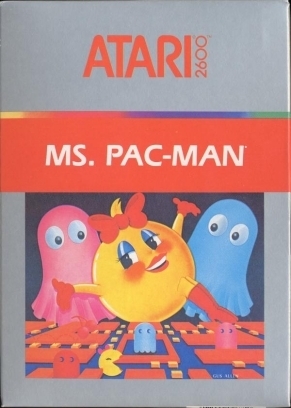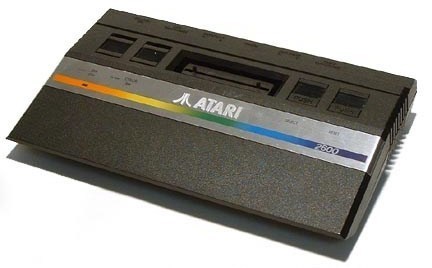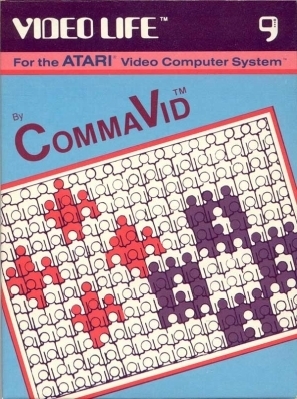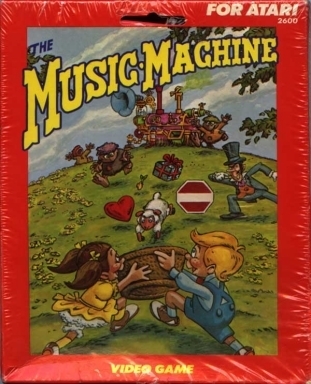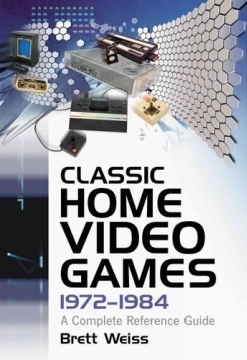Atari 2600: Long Live the VCS!
Mention the words “Atari 2600” to most anyone between the ages of 35 and 55, and you’ll likely hear such effusive praise as: “Atari was great!” “I had one of those when I was a kid, and my brothers and I used to play it all the time!” “Those games were so much fun!” And, my favorite, “I got one on eBay so I could show my kids how we used to play video games. They loved it!”
Released to store shelves in October of 1977, the Atari Video Computer System (VCS) is one of the most important consoles ever produced, rivaling the Nintendo NES and Sony’s PlayStation and PlayStation 2 in terms of bringing video games to the proverbial masses. While not the first video game console (the original Odyssey and the Fairchild Channel F both predate Atari’s venerable machine), the Atari 2600 (as it came to be called) made the word “Atari” synonymous with “video game” in the minds of the general public (at least until Nintendo assumed that role during the mid-to-late 1980s with the release of the NES).
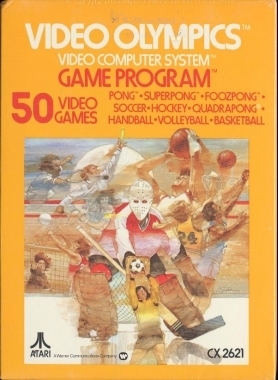
The Atari 2600 launched alongside nine game cartridges: Video Olympics
, Starship
, Street Racer
, Blackjack
, Indy 500
, Surround
, Basic Math
, Air-Sea Battle
, and Combat
, the latter of which was the pack-in game with the system. In addition to Combat
, the 2600 came with two stiff, but solid joysticks and a pair of rotary paddle controllers, which worked beautifully with such subsequent releases as Super Breakout
and Warlords
. The joysticks and paddles had just one button each, forcing programmers to be especially creative when designing more elaborate games. One such title, the immensely creative Space Shuttle: A Journey into Space
, programmed by Steve Kitchen, utilized the switches on the console itself during gameplay.

Built with a meager 128 bytes of RAM (Random Access Memory), the Atari 2600 was originally designed to play simple racing games, crude Pong
variations, rudimentary educational simulations, and basic action games. However, when the sci-fi classic Space Invaders
descended upon the arcades in 1978, helping turn the coin-op video game business into a multi-billion dollar industry, an Atari 2600 port was inevitable.
Released in cartridge form in 1980, Space Invaders
sent sales of the Atari 2600 into the stratosphere (the cartridge itself sold more than 1,000,000 units), laying the ground for such simplified, but action-packed arcade-to-home translations as Asteroids
, Missile Command
, and Ms. Pac-Man
.
Some of the best, most sophisticated offerings for the Atari 2600 were released by such third-party companies as Activision and Imagic, both of which were manned (at least in part) by ex-Atari employees longing for more royalties and more recognition for the games they would program.
Activision in particular had a number of standout hits, including: Kaboom!
, which made brilliant use of Atari’s paddle controllers; Pitfall!
, a groundbreaking adventure platformer that paved the way for such legendary side-scrollers as Super Mario Bros.
and Sonic the Hedgehog
; and River Raid
, a hugely influential vertical-scrolling shooter that was one of few games of the era programmed by a female (Carol Shaw).
Media licensing played a big part in the Atari 2600 catalogue as well, spawning such titles as: Flash Gordon
, loosely based on the 1980 feature film; Journey Escape
, starring virtual versions of the famed rock band Journey; King Kong
, a poor man’s Donkey Kong
; Masters of the Universe: The Power of He-Man
, a playable take on the 1980s cartoon; Star Wars: The Empire Strikes Back
, a great game that dark fantasy writer (and non-gamer) Harlan Ellison once trashed mercilessly in a review; Strawberry Shortcake Musical Match-Ups
, a good reason for little girls to fire up the 2600; and Superman
, an adventure game that broke new ground with its mission-based objectives.

While the Atari 2600 was an incredibly successful system (more than 30 million units were sold during its record-shattering lifespan of 14 years and two months), it wasn’t without its share of competitors. In 1980, after test-marketing the system in 1979, Mattel released the Intellivision, which, as company pitchman George Plimpton pontificated about in a number of TV commercials, had better looking, more sophisticated games—especially when it came to sports titles and space combat games—than its popular progenitor.
Despite the advances made by Mattel, the 2600 easily won the first console war, thanks to its plethora of arcade ports and to its vast cartridge library, which contained games that were generally faster and more enjoyable than that of the Intellivision.
By 1983, the Atari 2600 was starting to show its age. The previous year saw the release of the ColecoVision and the Atari 5200, both vastly superior to the 2600 in terms of graphics and sounds. Computers such as the Commodore 64 were also taking market share away from the 2600. Further, the 2600 library was getting increasingly crowded with shoddy third-party releases that appeared to be quickly slapped together to cash in on system’s popularity. Combine this with the release of a couple of disappointing high profile titles—Pac-Man
and E.T. The Extra Terrestrial
—and you’ve got a recipe for disaster, meaning the Atari 2600 had all but died by 1984, which was the year, along with 1983, of the fabled Great Video Game Crash.
In 1986, the home console industry rose Phoenix-like from the ashes with the release of the phenomenally successful Nintendo Entertainment System (NES), which Nintendo began test-marketing in the U.S. in 1985 (the Japanese equivalent, dubbed the Famicom, was released in Japan in 1983). With video games once again in the public eye, Atari released a smaller, cheaper version of the system unofficially called the Atari 2600 jr., which hit retail shelves in 1986.
That same year, Atari unveiled the Atari 7800, which was backward-compatible with the 2600, meaning it could play most of the games in the 2600 library. Both the 2600 jr. and the Atari 7800 barely made a splash in the wake of the NES juggernaut.
The Atari 2600 met its official demise in January of 1992, with Atari focusing its future efforts on the ill-fated Atari Jaguar, which debuted in 1993.
However, to paraphrase the great Mark Twain, reports of the death of the Atari 2600 were greatly exaggerated. Thanks to a number of factors, including a wave of nostalgia and a fanzine by the name of the 2600 Connection
(which began in 1990 and lasted for 100 issues), the Atari 2600 saw new life throughout the 1990s. Collectors began buying and selling games through the mail, and the advent of eBay near the middle of the decade had people retrieving their Atari 2600 systems and games from their closets and attics and selling them to the highest bidders.
While Atari officially abandoned their famed system in 1992, programmers and computer-savvy fans began producing “homebrew” Atari 2600 games during the mid 1990s. While some homebrew titles are cartridge-only, many games have been released in professional looking boxes with accompanying manuals. Many are downloadable to your computer as well.
Some of the more interesting Atari 2600 homebrews include: Blinky Goes Up
, a vertical scrolling platformer; Edtris 2600
, a Tetris
clone and one of the earliest 2600 homebrews; Evil Magician's Return
, an Adventure
-style game; Halo 2600
, a simplified homage to the Xbox classic; Lady Bug
, a stunning port of the 1981 Universal maze game; Medieval Mayhem
, an updated take on Warlords
; Okie Dokie
, a puzzle game and one of the first 2600 homebrews; the Asteroids
-inspired Space Rocks
; and Ultra SCSIcide
, a Kaboom!
-inspired action title. And far too many others to mention.
Another phenomenon surrounding the renewed interest in the Atari 2600 is skyrocketing prices for the harder to find, more highly sought after games. According to Video Game Trader
magazine, some of the more valuable carts include Chase the Chuckwagon
($64), Condor Attack
($162), Crazy Climber
($91), Eli’s Ladder
($861), Gauntlet
($1155), Lochjaw
($454), MagiCard
($545), Malagai
($385), Pepsi Invaders
($638), River Patrol
($432), and Video Life
($1585).
If the cartridge comes with the original box and manual, the game is even more valuable. In fact, the box is sometimes worth more than the game itself since the vast majority of boxes were discarded shortly after the games were purchased.
In 2010, a man named
Tanner Sandlin of Austin, Texas, while reading an article about rare and valuable video games, recognized one of the titles, discovered that it was still in his garage, and sold it on eBay for $31,600, one of the highest prices ever paid for a video game. The game was Air Raid, which he had purchased at the closeout store, Tuesday Morning, back in the 1980s. There are less than 20 copies of Air Raid known to exist.
Factory sealed titles can also be worth big bucks, as evidenced by a copy of Music Machine
that sold at for $5,250 in 2009. Music Machine was originally released only through Christian book stores making it exceedingly rare today, especially unopened.
Fortunately for budget-conscious 2600 fans, most of the better games in the Atari 2600 library are super cheap, due to the fact that they were released in large quantities. It’s easy to find such games as Asteroids
, Combat
, Defender
, Dig Dug
, and Ms. Pac-Man
selling for a buck or three apiece at retro video game shows or stores or on eBay. Also, although not nearly as common of a sight as it was a decade ago, 2600 games still show up at garage sales, flea markets, and thrift stores (though sometimes overpriced as “antiques”).
Collecting for the Atari 2600 entails more than just game cartridges and the system itself (which was available in several incarnations, including consoles produced by Sears and Coleco). A host of tie-in merchandise was released during the system’s heyday, including a trackball controller ($15-$20); a Missile Command
audio book ($20); a Starpath Supercharger for playing more powerful cassette-based games ($100); a Joyboard controller that players could stand on ($45); patches that players sent off for after achieving high scores on Activision games ($10-$50), and a plethora of third-party joysticks ($5-$25 or more).
There was even a comic book series. Published by DC Comics from 1984 to 1985, Atari Force
ran for 20 issues (plus a Giant Size special), with Fine to Near-Mint copies easy to find in the $1 to $5 price range.
For gamers and nostalgia buffs not wanting to clutter up their media shelves with a bunch of cartridges, there’s the Atari Flashback (2004), which resembles the Atari 7800 console and comes with 15 built-in 2600 games and five built-in 7800 titles. This was followed by the Atari Flashback 2 (2005); which resembles the original Atari 2600 console and comes with 40 built-in games; the Atari Flashback 3 (2011), which comes with 60 built-in games; and the Atari Flashback 4 (2012), which comes with 75 built-in games.
Another option is emulation (stella.sourceforge.net is a good source for this), which lets gamers download and play 2600 games on their home computers.
One important occurrence of the rise of 2600 fandom was the release of Leonard Herman’s ABC to the VCS: A Directory of Software for the Atari 2600
(Rolenta Press), which was published in 1994 and re-released (with screen shots and other upgrades) in 2005. This was the first of a number of books on older games, paving the way for such titles as Steven L. Kent’s The Ultimate History of Video Games
(Three Rivers Press, 2001), Van Burnham’s Supercade: A Visual History of the Videogame Age 1971-1984
(MIT Press, 2001), and my own Classic Home Video Games, 1972-1984: A Complete Reference Guide
(McFarland, 2007).
Price guides followed as well, including a series of Digital Press
collector’s guides and Video Game Trader
magazine.
Thanks to rabid fandom and the innate appeal of older video games, which offer simple, yet endearingly timeless challenges, a number of 2600-related websites host message boards and are filled with valuable resources, including reviews, manual scans, tips and tricks (including walkthroughs for such titles as
Adventure
and
Pitfall!
), and scans of such classic videogame magazines as
Atarian
and
Electronic Games
. Some of the more lively sites include Digital Press (www.digitpress.com), AtariAge (
www.atariage.com
), and The Video Game Critic (
www.videogamecritic.net
).
The best thing about collecting for the Atari 2600 is that you get to play with your collection. Baseball cards, stamps, pottery, wine bottles, and other such collectibles may be nice to look at, but video games are much more interactive. Just be sure to think twice before you break open that factory sealed cartridge. It may be worth a small fortune.
MY FONDEST ATARI 2600 MEMORY: After spending the first few years of the existence of the Atari 2600 playing it at various friends’ homes, I finally got one of my very own in 1983. I bought it with 10 cartridges from a high school classmate for the unthinkably low price of $10. It was the second system I owned, after the ColecoVision, which I had received for Christmas in 1982.
